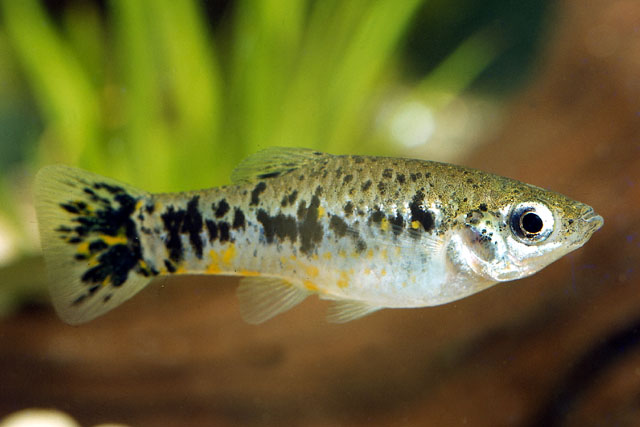| Poeciliidae (Poeciliids), subfamily: Poeciliinae |
| 8 cm TL (male/unsexed); 10 cm TL (female) |
|
demersal; freshwater; brackish; pH range: 7.5 - 8.19999980926514; dH range: 25 - 30, non-migratory |
| Central America: endemic to Cuba. |
|
Blue-gray back, silvery sides and a white belly; scales edged with black producing a "fishnet" pattern on the sides; females with a yellow patch near the vent; male's dorsal fin and tail usually yellow-orange with blue black speckles; females with colorless fins and growing to more than double the size of males (Ref. 44091). |
| Inhabits streams, lakes, estuaries, coastal lagoons and mangrove swamps. Feeds on worms, crustaceans, insects and plant matter (Ref. 7020). Often found in the company of sailfin molly and mosquitofish (Ref. 4409). |
|
Least Concern (LC); Date assessed: 22 May 2020 Ref. (130435)
|
| harmless |
Source and more info: www.fishbase.org. For personal, classroom, and other internal use only. Not for publication.

